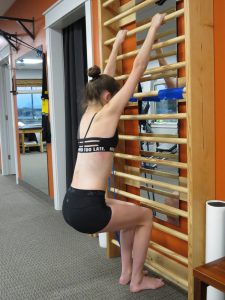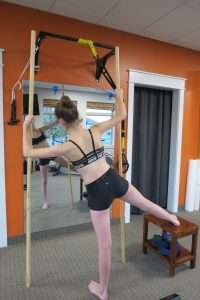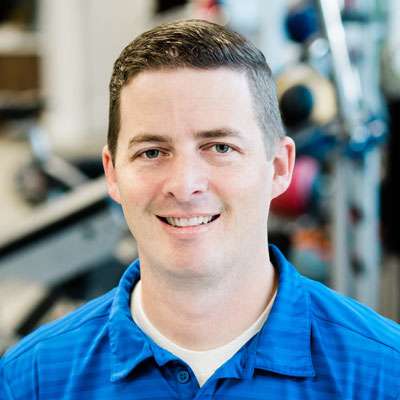Here at Align Therapy, we have been using the Schroth Method to treat scoliosis since 2015. It is not uncommon to have people call the clinic daily with questions about what the Schroth Method and how it can help their scoliosis. Sometimes I even have those who have seen our Youtube videos or heard our podcast ask why I can’t help them from afar.
My Introduction to the Schroth Method
My first introduction to the Schroth Method was in 2009 when a patient’s mother asked me if I could do it with her to stop her curve from progressing. At the time I was still a new therapist and really didn’t know what to do with that. However, it always stuck in the back of my mind that there was this method of treating scoliosis that no one around me was doing.
While I was at a Physical Therapy conference in Salt Lake City, I realized there was presentation on the Schroth Method. This presentation was by Hagit Berdishevsky, who is not an instructor with the Schroth Barcelona Institute. She gave a great introduction to the Schroth Method, but I still came away with quite a bit of confusion.
My Training!

In 2014, as I contemplated starting my own clinic, I realized there was no Physical Therapist doing scoliosis treatment in Utah. I decided to rectify this by getting trained in the Schroth Method and opening a practice specific to scoliosis. Before attending the course for the Schroth Method, I decided to purchase the Schroth book written by Christa Lehnert-Schroth and read it through before attending the course.
To my surprise, even as a PT, I couldn’t wrap my brain around what the method was. I thought I understood the theory behind it, but how to put it into practice was confusing to me. Thank goodness for my amazing Schroth instructor, Cindy Marti, who helped me understand and learn it fully.
In 2015, we opened our doors to the treatment of scoliosis and have been helping those with spinal deformities ever since.
There are 4 aspects of the Schroth Method that I would like to highlight, but first, lets talk about what it is meant to accomplish.
Overall Goal of Schroth Exercises
The main goal of the Schroth Method is to use exercises customized for each patient to help return the spine to a more balanced and natural position. These exercises are specific to the three-dimensional nature of scoliosis. Training the body to hold a more symmetrical posture helps to reduce progression of the curve and relieves pain.
The way this is done, on the other hand, is more complex. If we understand 4 specific aspects of treatment, it helps to understand the overall goal better. These four aspects are pelvic correction, elongation, correction, and corrective breathing.
1. Pelvic Correction

Correction of the spine has to begin at the bottom. As children, most of us used building blocks to make towers. Which block is the most important in the
tower? The bottom! If this block is tipped, twisted, or off balance, the rest of the tower cannot stay straight.
In scoliosis, the bottom block is the pelvis. Making sure the pelvis is directly under the trunk and in a neutral position is crucial to continuing with the rest of the steps. Most of the time, when you look at someone with scoliosis, you will notice their pelvis seems to be shifted off to the right or the left. This isn’t always the case, but common.
The shift to the side is only one direction we need to correct. Rotation is another direction affected by spinal deformity. We also have to make sure the pelvis isn’t tipped too far forward or backward.
Once we get the pelvis in a good position, then we can move on to the rest of the spine.
2. Elongation
Usually, scoliosis looks like an S or a C. I want you to picture having that S or C in the air in front of you. If you grab the top of it with one hand, and the bottom of it with the other hand and pull up and down, what happens to the S or C? It straightens out, right? The same goes for scoliosis. 
Elongation is one technique we use to reduce the magnitude of the curve. We can do this in a variety of ways.
Most of the time, gravity is pushing down and making the curve worse, but with hanging we can help to elongate the spine using it to help us. In the Schroth Method there are specific ways of hanging to reduce the curve. This helps to get mobility and motion in the curve in preparation for corrective exercises.
We also use exercises that work against gravity to elongate. This is very important because gravity is constantly pushing down on us. Learning how to elongate the spine with muscle contraction and breathing takes practice and work.
While elongating the spine, we must make sure #1, the pelvis is still corrected. Without a corrected pelvis, the elongation goes the wrong way, just like the tower of blocks.
3. Correction
When you look at a scoliosis x-ray, what do you see? A curve going to the right or left, or maybe 2 curves, or maybe 3, or sometimes even 4 curves? In order to reduce the imbalance of the curve, we need to bring those curves as close to midline as we can. We do that with corrective exercises designed to add muscle contraction and control around the curve. 
The thing we don’t notice on the x-ray most of the time is the rotation that is also in the spine. If you have someone with scoliosis bend over, you notice a prominence (sometimes called a rib hump) on the back. This is because the ribs and spine is twisted or rotated. If we want to reduce this dimension of the curve, the muscles need to be trained how to derotate the spine.
All of this correction is performed by learning specific muscle contraction techniques and breathing techniques to reduce the asymmetry of the spine and improve balance.
4. Corrective Breathing
Now, this is the one that was confusing to me! The idea of corrective breathing is to breathe into the concavities to create a force improving and reinforcing the correction. This means that the patient learns to breathe the opposite direction of the curve.
For example, if the spine is rotated in the upper back with the right side back and the left side forward, breathing backward on the left and forward on the right helps to derotate the spine.
If we think of the S shape of the curve, if we can get the lungs to expand into the concave sides of the curve, we can open those up to help with elongation. If we can breathe in multiple directions, it helps with all 3 dimensions of the deformity.
I was truly lost here before!
How do we breathe in one lung and not the other? or How do we control where the air is going?
Physiologically, our lungs are just bags of air that expand. We can’t direct where in those lungs we expand them….or can we? If you think of a balloon you are filling up with air, yes, the balloon is going to expand everywhere. But, if you put some compression on the balloon in a specific spot, that area is not going to expand, and the balloon is going to expand everywhere else.
So, if you learn how to control the muscles to not allow the air certain places, and then learn to relax the areas you want to expand, magically you have done it! We have then harnessed a major power in the body to help with correction.
It may still sound odd or unattainable, but I can tell you I have seen patients do it. It is amazing to watch and when they can get this down, it makes such a better and more complete correction.
Check out the Schroth Method in action!
Conclusion

So, that description may have actually caused more questions than it answered. Hopefully you now understand the basic principles of the Schroth Method. It isn’t an easy mindless exercise, and it takes a lot of work to learn and implement….but IT WORKS!
I have seen patients learn the exercises and stop progression of their curve to avoid surgery. I have seen adults with scoliosis reduce their pain and improve their posture by including these in a regular exercise routine.
This is a scoliosis treatment technique that has been around for decades! The Schroth Method is the most researched method of treating scoliosis and shows results.
If you want more information on the Schroth Method, or how we use it at Align Therapy, please don’t hesitate to call (801)980-0860 or even email me at david@aligntherapyutah.com.
Thanks for reading!
David Butler, Physical Therapist



